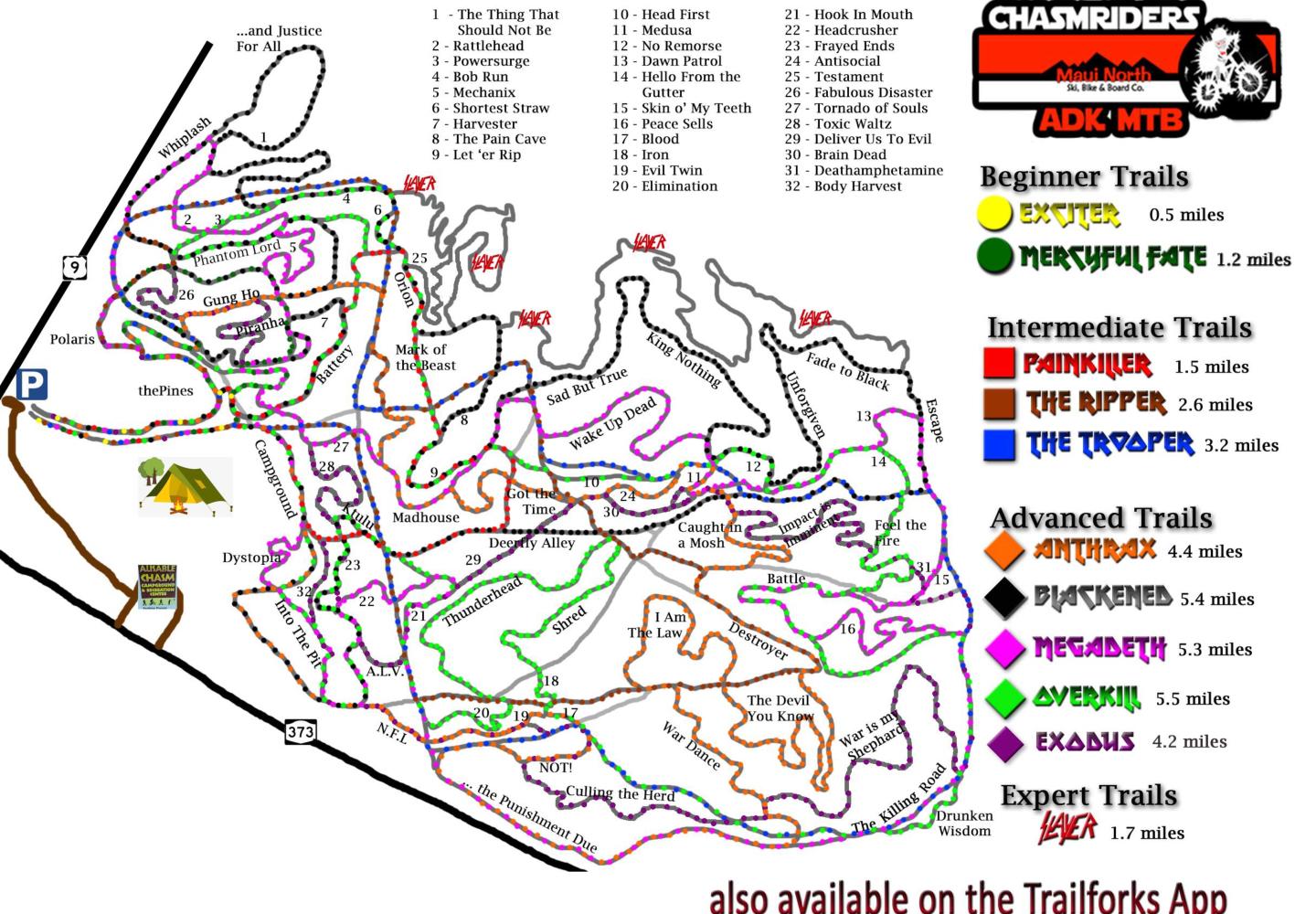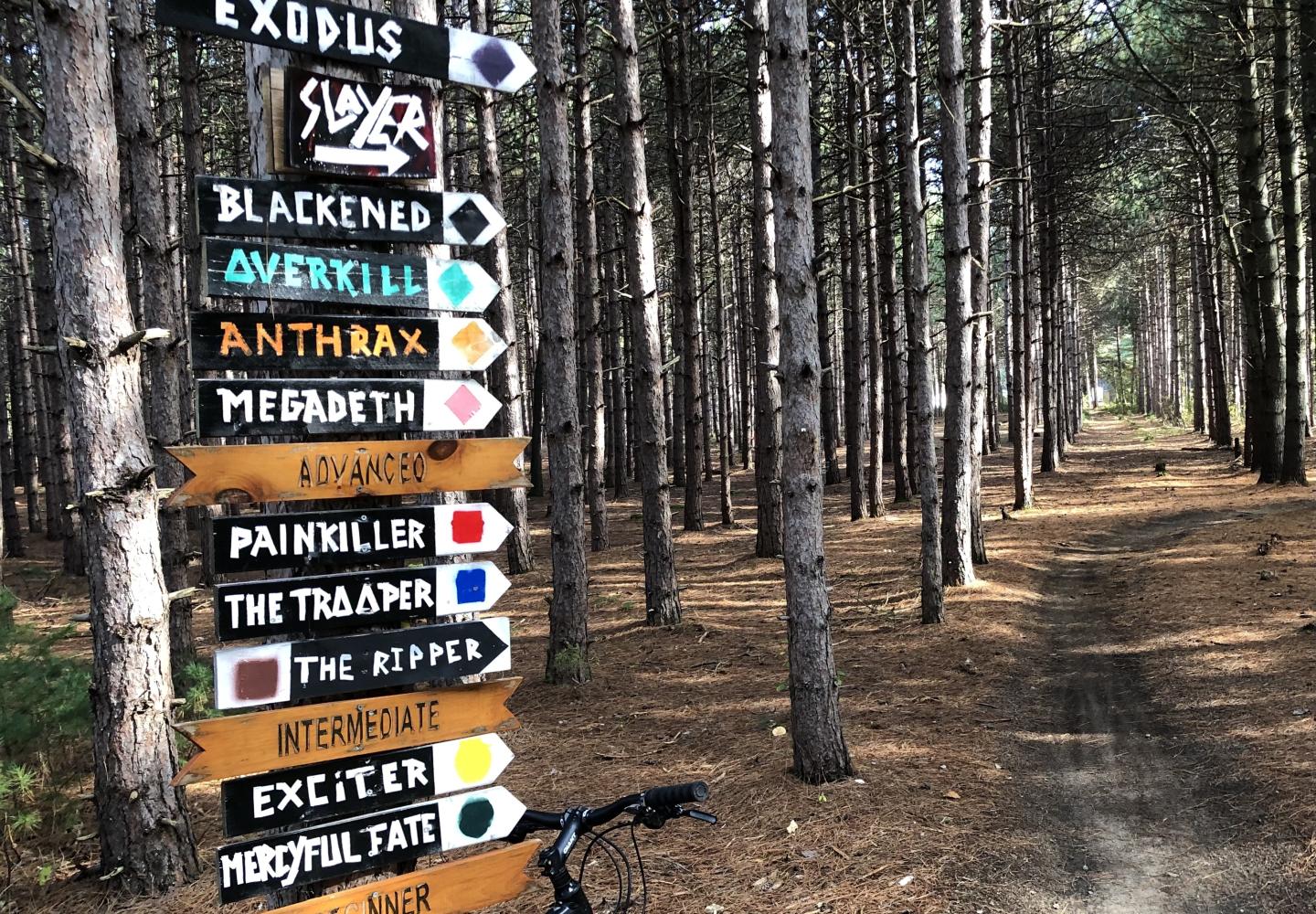Seeking Some Dry Spring Dirt?
Yuck, mud season. Too little snow to ski. Too much muck on the trails. You’re itching to ride, but your local network is still soaked.
What’s a conscientious biker to do in the Adirondacks?
One suggestion: check out the 25 miles of mountain-bike trails at the Ausable Chasm Campground. These are rideable earlier in the spring than most trails in the interior of the Adirondack Park.
Ausable Chasm is in the Champlain Valley, a few hundred feet above sea level. Typically, the valley sees less snow than the higher regions of the park. And what snow it gets melts sooner. What’s more, the Chasm Trails are built on sandy soil, which dries quickly. One frequent rider told me they can be ridden about a week after snowmelt.
DISCLAIMER: Always check local trail reports before riding. And, if it turns out to be too muddy when you get there, don't ride.
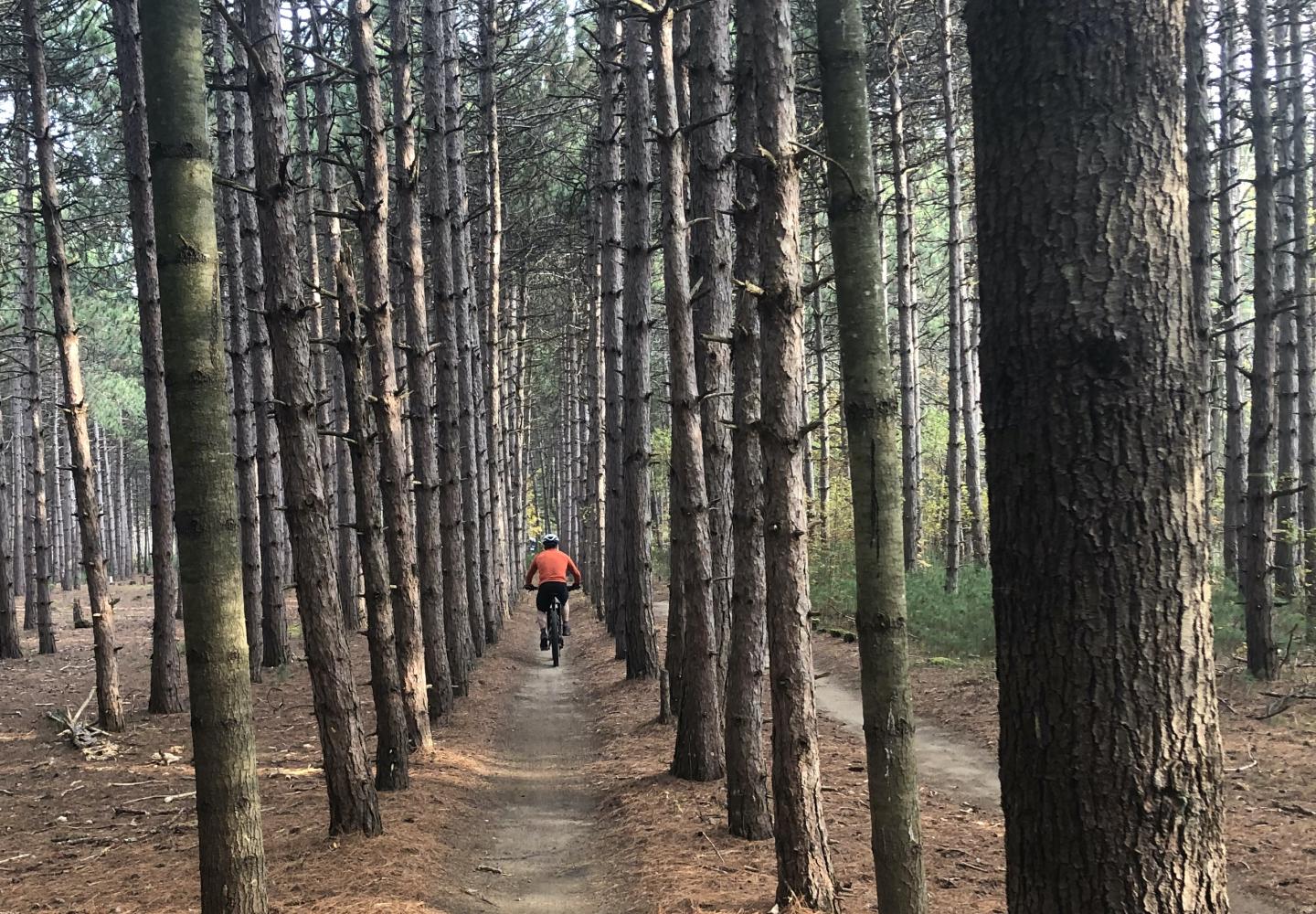
Tom Bressett, general manager of Ausable Chasm, said the bike trails started out as cross-country-ski trails. Because of unreliable snowfalls, they are now used mostly for biking and hiking. A group of local bikers, Chasm Riders, has expanded and helps maintain the network.
Bressett said the trails are used mostly by locals and campground guests. Occasionally, though, someone from outside the immediate area pays a visit. “The bikers who come to ride just eat it up,” Bressett told BikeADK. “They love it.”
Last fall, I became one of those enamored with the Chasm Trails. I rode there several times when it was too chilly to bike in my neck of the woods (the Lake Placid-Saranac Lake area). My last visit was on December 17--a full month after I had skied the Whiteface toll road.
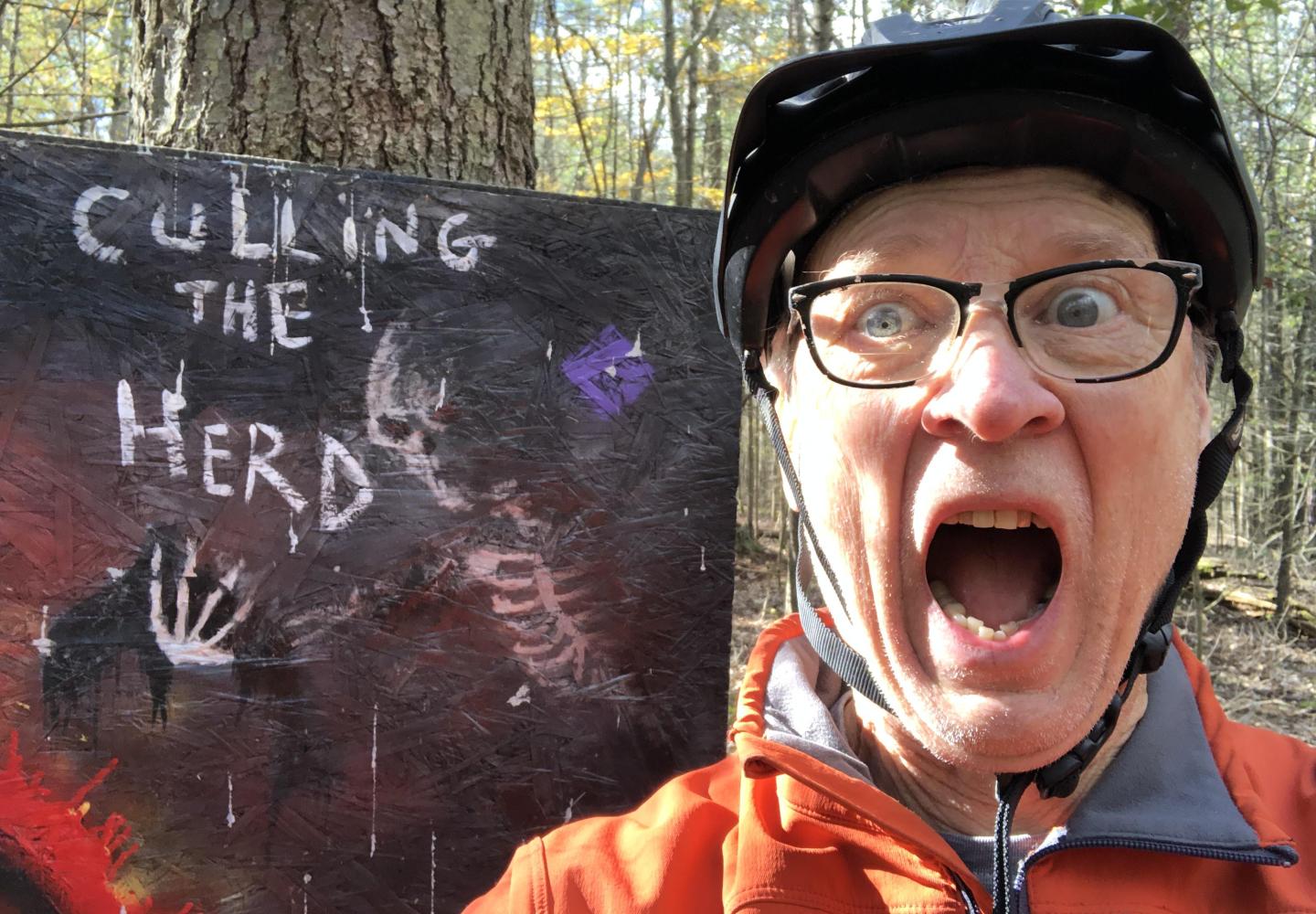
The riding at the Chasm differs from the BETA trails. Despite scary names inspired by heavy metal (Anthrax, Blackened, Brain Dead), the trails generally are easier, with less climbing and fewer obstacles. But the routes are longer, up to 5.5 miles. If you enjoy cruising through the woods for long distances, the Chasm Trails are the ticket. It’s easy to rack up 15 or more miles in a day. There also are short and easy routes, making the place ideal for novices.
This is not to say the Chasm Trails offer no challenges. The hardest route, Slayer, angles up and down steep ravines. I ended up walking my bike much of the way. A trail appropriately named Dystopia requires you to ride over a jumble of concrete slabs, evidently dumped in the woods years ago. Other difficulties include a ramp over a fallen tree, a sharp dip into and climb out of a sandy pit, a boardwalk on a narrow ridge, and the occasional rock or root.
On my first visit, I was somewhat confused by the campground’s trail map. It showed numerous trails with colored dots. Usually, a trail would have dots of various colors. Each trail was identified by name. On the side of the map was a list of routes, each identified by its own color. The routes were grouped by difficulty, using the same symbols found at ski areas: circle for beginner, square for intermediate, diamond for advanced. Only Slayer is classified as “expert.”
I soon figured out that you don’t have to pay much attention to the names of trails. The routes are more important. Each is a linkup of several trails. Once you’ve picked a route, you simply follow the markers corresponding to the route’s color (and symbol). Since routes overlap, you often will find yourself on trails with markers of different colors. At intersections, routes diverge, so you must be careful to follow the appropriate marker.
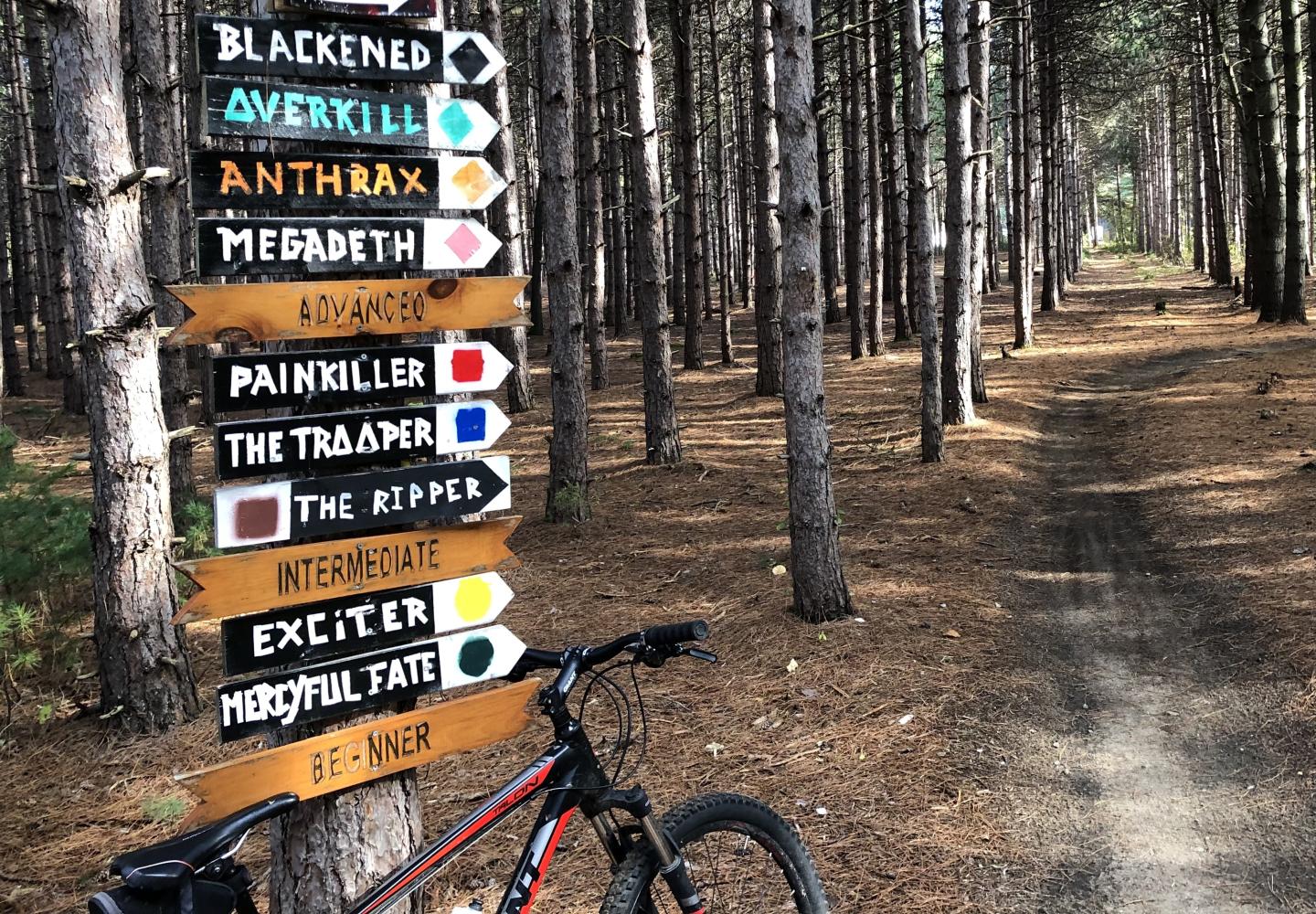
All told, in addition to Slayer, the Chasm Trails have two beginner routes, three intermediate routes, and five advanced routes. Don’t let the labels mislead you. An experienced mountain biker who is not an expert should be able to handle all but the trickiest parts of the advanced routes. Although I’m an intermediate biker, I spent most of my time on the advanced trails--and thoroughly enjoyed them.
Two of my favorite routes were Megadeth (5.3 miles) and the newest one, Exodus (4.2 miles), both classified as advanced. Megadeth is the only route to include the Dystopia trail, which I was able to negotiate cleanly about half the time. In another place, Megadeth asks riders to plummet down a short, steep drop with a turn at the bottom next to the edge of a ravine. I didn’t even try this. I either dismounted or took an easier way.
All of the Chasm routes are a mix of single-track and double-track woods roads. The ratio varies from route to route. My impression is that intermediate routes have more double-track than the advanced routes do. One reason I like Megadeth and Exodus is that they boast a high percentage of single-track. Once you become familiar with the network, you can deviate from the official routes to minimize the amount of double-track riding.
Chasm Trails are worth getting to know, and not just for early-spring and late-fall riding. They’re great for blasting through the woods whenever the weather is right.
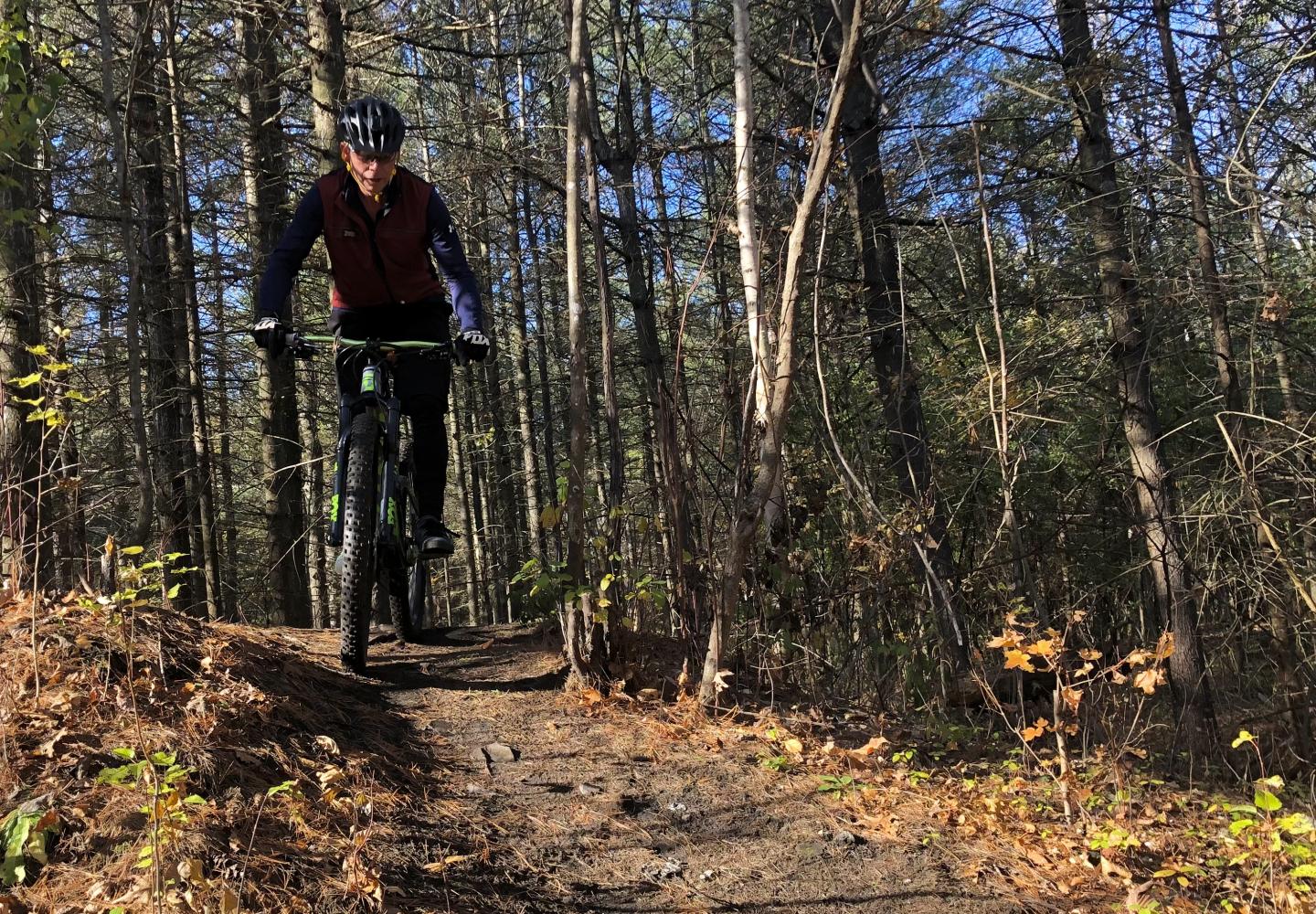
If you’re not staying at the campground, you have to pay $8 a day for a bike pass. If you plan to ride there more than a half-dozen days, you should buy a season’s pass for $50. Passes can be purchased at Ausable Chasm’s headquarters off Route 9 a few miles east of Keeseville. After obtaining a pass, you’ll need to drive to the trailhead. From the headquarters, go east on Route 9 for less than a half-mile to a parking area on the right, just past the turn for Route 373.
Ausable Chasm plans to install a trail map at the parking area this year. Meantime, you can download a trail map from TrailForks: https://www.trailforks.com/region/ausable-chasm-15610/. There also is a trail map at the Ausable Chasm Campground, which borders the trail network.
And, if you feel like racin' Chasm Riders hosts bike races twice a month during the prime riding season. For more information, check out their Facebook page: https://www.facebook.com/chasmriders/.
